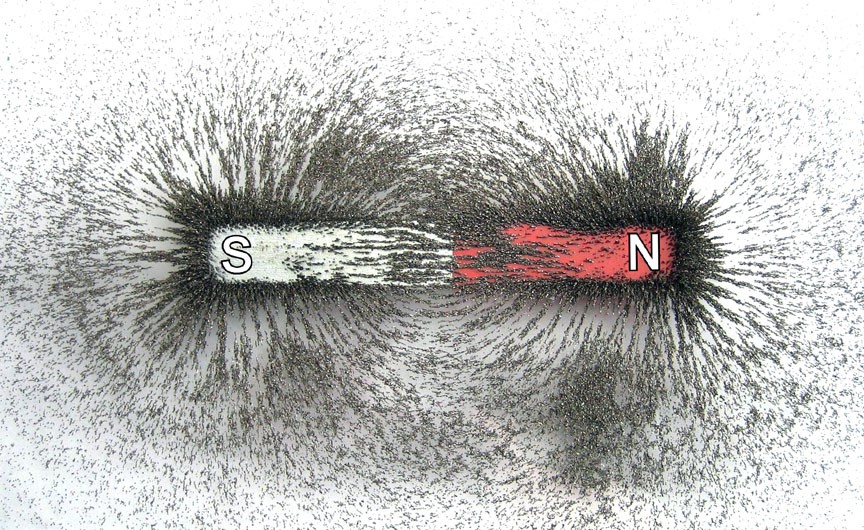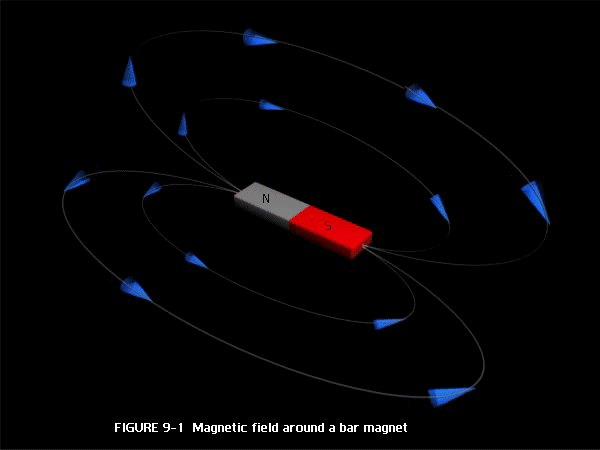An Overview of Magnetic Field Lines and its Characteristics
In this blog, we will review the theory of Magnetic Fields and its basic concept. We all know that magnets exert forces on each other and its magnetic force is distributed around. Magnetic field lines are used to describe these forces around the magnet. We understand that magnets have two poles and that depending on the orientation of two magnets there can be an attraction (opposite poles) or repulsion (similar poles). We also recognize that there is some region extending around a magnet where this happens and this is explained by the magnetic field lines.
How to map a basic Magnetic Field?
Let's begin with the field lines of a bar magnet, perhaps the simplest case to analyze. In Fig.1, we can observe the magnetic field pattern of a bar magnet by scattering iron filings over it. As the filings are scattered around the magnet, they become temporary magnets (by magnetic induction) and line up end-to-end. The filings tend to clump together around the poles of the magnet, indicating that this is where the magnetic field is strongest. The lines of iron filings give an impression of the layout of the magnetic field. We also see all field lines begin at the north pole and terminate at the south pole.

Fig 1. Iron filings create a pattern around a bar magnet
Characteristics of a Magnetic Field Lines:
The pictorial representation of magnetic field lines is very useful in visualizing the strength and direction of the magnetic field. Extensive exploration of magnetic fields has revealed a number of characteristics that help us understand them better. Below are the important characteristics of a magnetic field:
• Form a continuous closed loop
• Elastic in nature
• Takes path of least reluctance
• Never intersect each other
• Has direction from north to the south pole, even though there is no actual movement
Why are Magnetic Field Lines Important?
Magnetic fields are used throughout modern technology, particularly in electrical engineering and electromechanics, and crucial for a technician to understand. Measuring Magnetic field lines helps us calculate:
- The magnitude of the magnetic field
- The direction of the magnetic field
- Magnetic field intensity
We hope this has been helpful to you as a Technician or a student entering the field. If you have any questions about the Electronics or the Electromechanical Technician programs you can reach one of our Program Consultants toll-free at 1-888-553-5333 or by email at info@gbctechtraining.com.
Comments
As mentioned above, …
Submitted by Iris on Fri, 08/01/2025 - 15:02
As mentioned above, “Magnetic field lines are used to describe these forces around the magnet.”
The filings will align themselves in a definite pattern because the magnetic field that surrounds the magnet radiates in lines of a continuous loop passing through the magnet. When the filings are places near the magnet they become magnetized, and each filing particle can be considered a tiny temporary magnet which attracts each other connecting in a pattern plotting or aligning with the lines of forces of the magnet, verses being joined together in a random clump. The concentration of the filings is condensed at the poles and closer to the magnet since the magnetic force is greatest at this point.
The magnetic field surrounding a bar magnet may be investigated more accurately using a compass which helps in plotting the lines of forces. A compass is actually a magnet that is mounted in such a way that it is free to rotate when affected by an outside force. If a small magnetic compass is placed near one end of a bar magnet, the force between the poles of the magnet and the poles of the compass-needle magnet will move the compass needle away from its usual north-south direction. As long as the compass needle is small in comparison with the bar magnet, the compass will point in the direction of force exerted by the bar magnet on the poles of the compass. More exactly, the compass will point in the direction of the magnetic field surrounding the bar magnet. Because the north pole of the compass will be repelled by the north pole of the bar magnet, the compass will point away from the north pole of the bar magnet. This implies that the direction of a magnetic field at any point is the direction of the force exerted on the north pole of a magnet placed at that point.
If the compass is moved steadily in the direction in which it points at any instant, it will follow a continuous path from the north pole to the south pole of the magnet. Any number of these paths can be traced out, depending on the starting point chosen for the plotting compass. The resulting pattern, which is a replica of the pattern formed by the iron filings, represents a map of the magnetic field of a magnet. The pattern formed by the magnetic lines of force is shown in Figure 9-1.


Why do iron filings create a pattern around a bar magnet